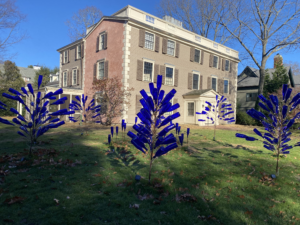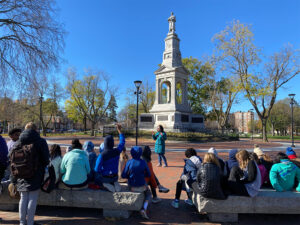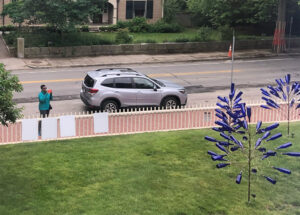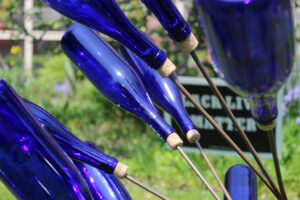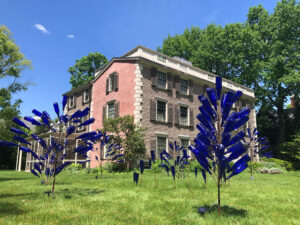Posts Tagged ‘Forgotten Souls of Tory Row’
History Cambridge looks back at 2022
As 2022 comes to a close, History Cambridge is looking back on a year filled with events and collaborations that have helped us to live into our mission to collect and share the stories of all Cantabrigians. Our theme for 2022 was “Who Are Cambridge Workers?” Many of our programs focused on the history of labor in the city, but we also held events and created partnerships in other areas of Cambridge history, including our temporary art installation honoring the lives of the enslaved people who lived and worked on Brattle Street.
Read MoreMeaning of monuments can be in what’s missing
Students said they had learned the history behind some of the memorials, but that it was interesting to think about when, why and by whom they had been created.
Read More‘Art in Public’: Film explores the relationship between creativity and enhancing community
Many might consider art just a tool to beautify a space. “Art in Public,” a feature-length documentary film about Cambridge-based public art, illuminates ways art allows us to see the world differently. It gets a premiere Wednesday.
Read MoreHistory Cambridge plans a celebration Saturday for its ‘Forgotten Souls of Tory Row’ installation
History Cambridge put out a call in February to artists to create a temporary installation on the lawn of our headquarters, the Hooper-Lee-Nichols House, 159 Brattle St., West Cambridge. With support from Cambridge Arts and the Mass Cultural Council, this project’s goal was to honor the enslaved people who lived and worked on Brattle Street. Many of the area’s wealthy homeowners made their wealth through enslaved labor in Jamaica and enslaved people at their homes and estates in Cambridge. Joseph and Rebecca Lee, owners of the Hooper-Lee-Nichols House, were complicit in this economy. We know of at least five individuals – Cesar, Prince, Caesar, Mark Lee (or Lewis) and a woman whose name we do not know – who were enslaved by the owners of the house. Although we have no direct surviving evidence that an enslaved person ever lived there, we know other white Tory Row families enslaved people at their Brattle Street mansions. History Cambridge strives to use its headquarters in a way that recovers and shares the stories of the enslaved people of this land and acknowledges that chattel slavery was a Northern as well as a Southern system.
Read MoreCambridge’s Caribbean connection runs deep
“Forgotten Souls of Tory Row: Remembering the Enslaved People of Brattle Street,” the installation of bottle trees now on view at the History Cambridge headquarters (159 Brattle St.), was inspired by a custom that originated in Congo in West Africa long ago. The tradition of bottle trees was brought to the Caribbean and the Southern United States by enslaved people and passed down through generations. While bottle trees signify different things to different people, there is agreement that the bottles are placed on tree branches to destroy evil spirits and to capture the energy, spirit and memories of ancestors.
Read More‘Forgotten Souls of Tory Row’ art installation remembers enslaved people of Brattle Street
Cambridge and slavery are not often paired in the public imagination. Most think of the enslavement of people of African descent as a Southern phenomenon from which the North, particularly New England, was exempt. But slavery was a very real, ever-present institution in Northern colonies and, later, states – including Massachusetts. Recent efforts by academic and public historians to emphasize the role slavery played in the Cambridge area include the re-centering of Medford’s Royall House and Slave Quarters to focus on the experiences of enslaved people on that estate, as well as Harvard University’s recent release of the “Harvard and the Legacy of Slavery” report. History Cambridge has also been engaged in this important work through our research and public programs, including our Tory Row Antiracism Coalition
Read More
